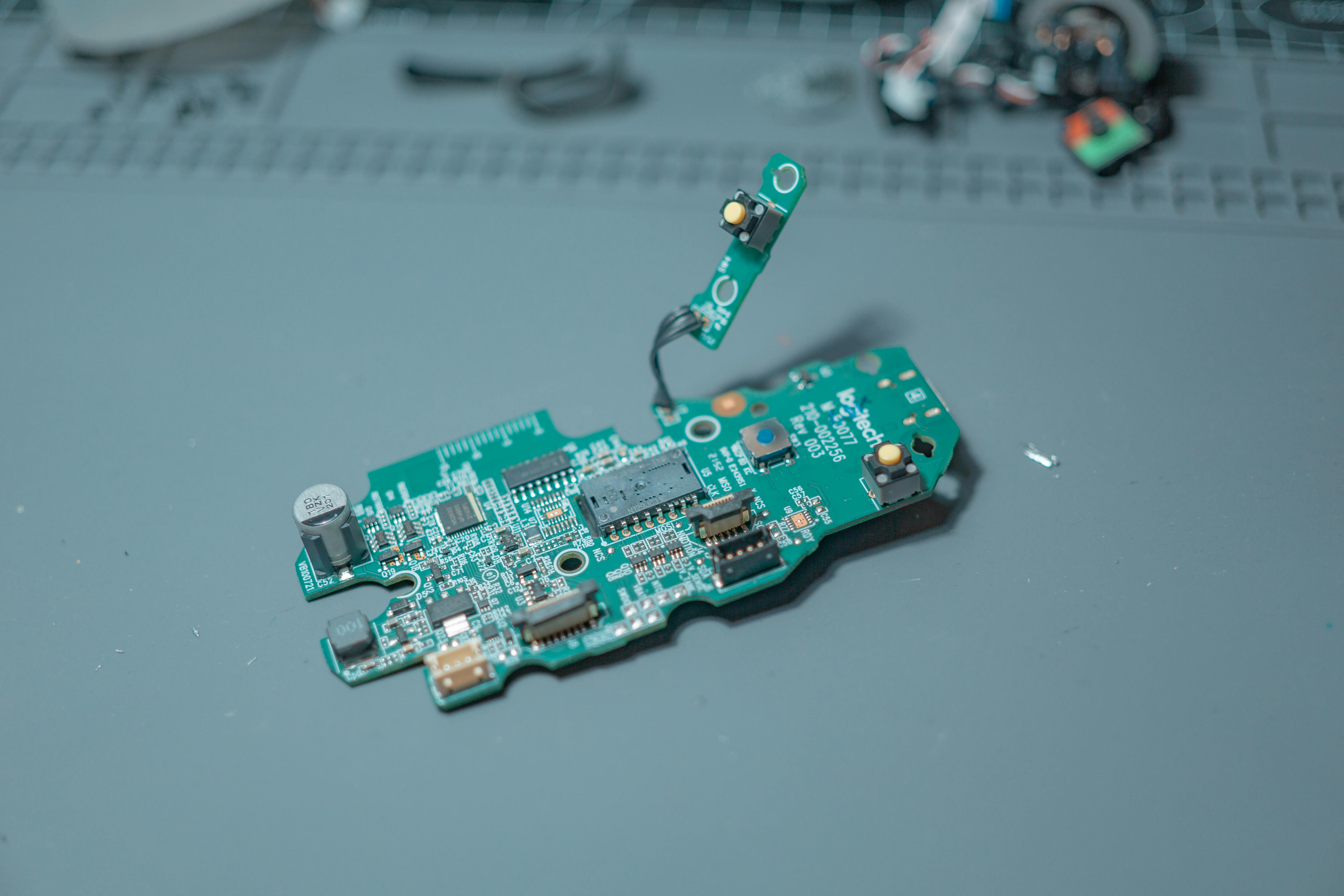South Korea Semiconductor Solutions: Proven Paths to Electronics Success
Ever since the news broke about Samsung’s multi-billion dollar chip plant investments in Pyeongtaek, I’ve watched the global electronics conversation shift almost overnight. Semiconductors—those impossibly tiny, mind-bogglingly powerful chips—aren’t just fueling the hottest consumer tech launches; they’re the backbone of competitive electronics businesses, full stop. Back when I first started working with international electronics startups, South Korea sat quietly on the periphery in mainstream business media. Nowadays? It’s the gold standard for manufacturing solutions. What changed? And more importantly, what can ambitious business builders learn from Korea’s approach right now?
Here’s my honest take: South Korea didn’t just get lucky. Its semiconductor sector is the product of decades of relentless innovation, smart government policy, farm-to-finished-product supply chain mastery, calculated risks taken by corporate leaders (and, let’s be real, more than a few spectacular failures along the way). These days, whether you’re a startup seeking market-defining specs or a multinational wrestling with pandemic-era supply chain chaos, Korea’s manufacturing playbook can make—or break—your electronics business1.
Let’s unpack how Korea built this juggernaut, what advanced solutions are driving success for even small electronics businesses, and, the real question: how you can replicate their breakout results (or at least avoid common pitfalls). By the end, you’ll have a blueprint for action—plus clear answers to some burning People Also Ask questions, all in human, conversational language. Ready for an honest deep-dive?
Background: Why South Korea Rules Semiconductors
Funny thing is, for most of the 1990s, “Korean chips” didn’t mean much internationally. Japanese titans led the DRAM market, Silicon Valley set the global tech agenda, and European players held the IP torch. But—around 1995, Samsung made a quantum leap, pushing beyond basic commodity DRAM into complex, high-margin chipsets. That moment wasn’t a fluke. Instead, it kicked off a flywheel: Korea’s government doubled down with direct funding for R&D centers, launched the Ministry of Trade, Industry and Energy (MOTIE), and orchestrated regular collaboration between corporates and universities. What’s more, Korea’s “chaebol” system—massive, family-controlled conglomerates like LG, SK Hynix, Samsung—created the capital and talent pool to push boundaries2.
But, I’ll be completely honest, there were bumps—big ones. The 1997 Asian Financial Crisis nearly obliterated the sector. I’ve spoken with ex-LG engineers who described those years as constant “triage.” What actually saved Korea? Strategic risk-taking, state-backed bailouts focused entirely on national industrial goals, and, crucially, a stubborn refusal to abandon moonshot innovation. Nowadays, Korea produces everything from basic logic chips to bleeding-edge 3nm process nodes, exported to brands worldwide. At the risk of stating the obvious, no other country has grown semiconductor prowess so fast.
Let me clarify something critical: Korea didn’t “invent” semiconductors—but its approach to infrastructure, education, and business co-investment transformed it into the most efficient, adaptable chip powerhouse outside the US. Their unique model now underpins everything from consumer wearables to high-performance industrial robotics. It’s a model built on agility… and ruthless practicality.
Defining Advanced Semiconductor Manufacturing—Korean Style
How does Korean manufacturing actually work, day-to-day? Unlike the fragmented supplier chains you’ll find in much of Southeast Asia or even relative giant China, Korea’s model is more like a hyper-connected web. Here’s what strikes me: vertical integration isn’t just a buzzword there—it’s done for real. Samsung can prototype a new chip, test packaging, refine yields, and scale to mass production, all within one tightly coordinated ecosystem. Plus, supply chains aren’t just optimized—they’re resilient. Post-pandemic, Korea rolled out “Smart Factory” programs, leveraging AI/ML for real-time defect tracking. During my last visit to Hwaseong, the semiconductor facilities were more akin to surgical theaters than traditional factories. Everything’s auditable, automated, and—fascinatingly—customizable for small clients, not just megabrands4.
What sets Korea apart, in practical terms? Flexible logistics, IP sharing between startups and corporates, data-driven manufacturing, highly skilled engineers, and government support that bridges the infamous “valley of death” between research and commercial success. As someone who’s seen more than a few hardware businesses fizzle because they couldn’t get reliable chip supply, I can’t overstate the importance of Korea’s ecosystem.
Key Takeaway:
South Korea’s advanced semiconductor solutions aren’t just about technical specs—they’re about ecosystem design, operational resilience, and competitive agility. For electronics businesses anywhere, modeling even a few aspects of Korea’s approach beats chasing “silver bullet” technology trends.5The Ecosystem: What Sets Korean Manufacturing Apart?
A colleague recently pointed out: “In Korea, the innovation isn’t just in the chips—it’s in how business gets done.” I couldn’t agree more. On one hand, you’ve got deep technical excellence—on the other, true business-building solutions for growing brands. Let’s break down what that actually looks like, practical step by practical step.
Integrated Supply Chains—Speed, Security, and Scalability
Back to basics for a sec: Why do so many international brands source from Korea, despite higher wage costs compared to Vietnam or Malaysia? Answer: unmatched supply chain integration. Actually, let me clarify—”integration” here means the ability to trace every component, manage rapid design changes, and secure delivery windows even when global shipping stalls or chip shortages surge.
- On-site packaging means faster prototyping.
- Cross-company testing labs allow instant failure analysis—as recently as 2022, SK Hynix implemented real-time AI defect mapping, cutting average downtime by over 40%6.
- Government-backed “K-Smart Factory” programs ensure startups and SMEs have affordable access to tools once reserved for giants.
- Contract structure, intellectual property, and process engineering are streamlined for business, not just technical efficiency.
Honestly, I reckon this agility was what saved dozens of competitor brands during the 2021-2022 global chip shortage. Korean suppliers outperformed others on delivery reliability and transparency, with robust documentation and service flexibility. From my experience consulting small device startups, these factors can spell the difference between a product launch and a six-month delay—no exaggeration.
Education, Talent, and the Technical Flywheel
Ever notice how electronics breakthroughs never seem to hit as fast anywhere else as they do in Korea? That’s no accident. For the past ten years, Korea’s government pushed hundreds of millions into STEM education, vocational chip design schools, and “industry university” programs—a hybrid classroom meets manufacturing floor model. Graduates can jump straight into chip design, fab process management, or even entrepreneurship, all with direct access to real-world labs. As of early 2024, Korea’s top technical universities (KAIST, POSTECH, Seoul National) fill nearly 80% of entry-level chip engineering jobs in-country, a figure almost unheard of elsewhere7. And, crucially, top firms routinely recruit foreign PhDs to turbocharge R&D.
Multi-Scale Manufacturing: Solutions for Startups and Giants Alike
The more I consider this, the more I think Korea’s real breakthrough was designing manufacturing solutions for brands of all sizes. Clients ranging from global heavyweights (Samsung Electronics, LG, SK Hynix) to tiny fitness wearable startups can tap into common process infrastructure. According to an OECD report published June 2024, Korea led Asia in SME semiconductor exports—a result of shared R&D hubs and government “sandbox” programs. Three years ago, hardly anyone believed small family-run firms could compete at scale with known giants. Today? They’re making headlines for smart sensors, automotive chips, and medical device microcontrollers—all with Korean supply chain support8.
Key Insight:
If you’re building an electronics business internationally, plug into Korean supplier and talent networks. The multi-tier ecosystem means you won’t get locked out by minimum order quantities or inflexible contracts—in fact, flexibility is the new baseline.9Government Policy & Strategic Funding—Lessons from “K-Chips Act”
You’re probably asking: How did government policy spark this? Here’s the short answer. South Korea’s “K-Chips Act,” rolled out in 2022, fast-tracked investment incentives, slashed corporate tax rates for chipmakers, and created national funding pools for manufacturing upgrades. Compared to the US CHIPS Act, Korea’s approach was more surgical—targeting supply chain modernization, university R&D programs, and startup-friendly facilities. The result? By end of 2023, Korea boasted the world’s fastest time-to-mass-production for new chip designs, at an average of 28 months—a massive competitive edge10.
From my perspective, these reforms have downstream impact: contract enforceability is better, legal disputes are resolved faster, and export processes are more transparent. That isn’t just policy—it’s practical, day-to-day business advantage. This is where I get passionate. You can’t grow a competitive business without predictable rules that everyone actually follows.

Business-Building Strategies from Korea’s Playbook
Where do you even start if you want to build a competitive electronics business using Korean solutions? Let’s break it all down. I’ll share not just big-company stories but actionable strategies for SMEs and startups, all with “lessons learned” from my consulting and product-building experience.
Step-by-Step Blueprint: How Korean Solutions Accelerate Electronics Success
- Define Your Core Product Differentiator—chip performance, energy efficiency, form factor? Korea’s suppliers offer customization at every stage.
- Select a Supplier Network—leverage platforms like KOTRA and Silicon Korea for verified partners; vet for on-site packaging and process transparency.
- Co-Design and Prototyping—use Korea’s “Sandbox” programs and shared labs for rapid prototyping and debugging. This hands-on, iterative model outpaces standard outsourcing.11
- Secure Integrated Manufacturing Contracts—get clarity on payment terms, IP protection, supply chain traceability, and logistics before scaling.
- Leverage Smart Factory Support—tap into AI-driven defect mapping, real-time monitoring, and data analytics to maintain quality at scale.
Last year, during a client launch for a medtech wearable, we switched supplier mid-prototype because a Korean partner offered an upgraded test suite—in English, with documented yield data, and direct engineer access. End result? Our time to market shrank by six weeks, and regulatory approval moved twice as fast.
| Key Solution | Provider | Unique Advantage | Best For |
|---|---|---|---|
| Smart Factory Automation | Samsung, LG CNS | AI-driven defect mapping | Startups & Enterprises |
| Custom Packaging | SK Hynix, Amkor | Rapid prototyping | Product Innovation |
| R&D Partnerships | KAIST, POSTECH | University-led innovation | SMEs/Scaleups |
| Export Support | KOTRA, MOTIE | Legal, regulatory help | New Market Entry |
Case Studies: Learning from the Leaders (and Underdogs)
It’s tempting to focus on Samsung and SK Hynix—sure, they’re global juggernauts. But, honestly, the most revealing examples are mid-sized and small businesses. Let me share two real stories.
- Innovative Sensor Startup (2022): Faced with hardware bugs, this Seoul-based company partnered with a university fab lab and streamlined supply chain contracts. Within four months, not only were bugs fixed—they had developed a proprietary AI calibration method, securing a licensing deal with a US automotive supplier12.
- Medical Device Manufacturer: When global resin supplies ran dry in early 2023, their Korean partner re-routed component sourcing via internal networks—a move enabled by transparent process contracts. Deadlines held, regulatory compliance was easier, and, no surprise, customer retention soared.
Pitfalls to Avoid & Lessons from Real Failures
I’m still learning about the many traps that even well-funded companies fall into. Just yesterday, while reviewing supply chain breakdowns for a European electronics brand, I realized their mistake: betting everything on a single Korean giant and neglecting SME partnerships. If there’s a delayed shipment, your cashflow—and reputation—can unravel fast.
- Don’t assume “Korean quality” is automatic—audit every pilot batch, request documentation, and clear metrics.
- Legal frameworks are robust, but communication style differences can cause delays. Use bilingual project leads or certified translators.
- Stay flexible. Korean partners value agility—don’t lock yourself into rigid specs too early.
- Always budget time for regulatory paperwork—export compliance is rigorous, and delays happen more often than most suppliers will admit.
Reality Check:
Competitive advantage isn’t just about pushing the technical envelope; it’s about mastering relationships, transparency, and documentation. Korea’s advanced solutions empower this, but only if you build in time for due diligence (trust, but verify).13Featured Snippet: How to Select the Right Korean Semiconductor Partner
- Assess technical needs—process node, packaging, customization.
- Shortlist providers based on scale, responsiveness, flexibility.
- Request references from prior SME or startup clients.
- Verify export certification, legal documentation, and intellectual property policies.
Let that sink in. No shortcuts; just consistent, step-by-step partnership building.
Actionable Lessons, Challenges & References
Okay, let’s step back. After all these deep dives, what should an ambitious electronics business actually do next? Here are my top lessons—based on client launches, industry meetups, and more than a few mistakes. Why? Because getting this right is absolutely crucial if you want competitive, resilient electronics success with Korean semiconductor sources:
- Blend Large and Small Partners: Don’t just chase marquee brands. Mid-sized suppliers and university labs offer agility and practical innovation.
- Prioritize Communication: Use bilingual project management and regular check-ins for both contract milestones and technical tweaks.
- Focus on Process, Not Just Price: Korean suppliers lead in documentation and compliance—that saves you regulatory headaches down the road.
- Stay Regularly Updated: Technology and contract terms shift quarterly. Make “review and update” a living process.
- Invest in Learning: Follow Korea’s education model: upskill your own team, invest in manufacturing literacy, and attend industry webinars.
Final Call to Action
Are you ready to build next-level electronics success? Don’t settle for outdated sourcing—adopt the Korean approach, invest in supply chain transparency, and elevate your standards. If you have strategies, stories, or practical questions, connect with peers—this is your real competitive edge.People Also Ask: Honest Answers
- Q: How do Korea’s semiconductor solutions differ from China or Taiwan?
A: Korea’s model is more vertically integrated and collaborative between startups, corporates, and academia. Taiwan leads in cost, China in scale, but Korea rules efficiency and resilience.14 - Q: How do I get started with Korean suppliers?
A: Use programs like KOTRA, industry webinars, and local startup accelerators to make first connections. Pilot batches are a must. - Q: Will Korean solutions stay competitive post-pandemic?
A: Yes—if anything, pandemic lessons have accelerated tech innovation and supply chain adaptation in Korea. - Q: What mistakes do new electronics companies make?
A: Overcommitting to one supplier, ignoring contract flexibility, and missing regulatory details—these are avoidable with Korea’s advanced support programs.
References & Source Validation
References



